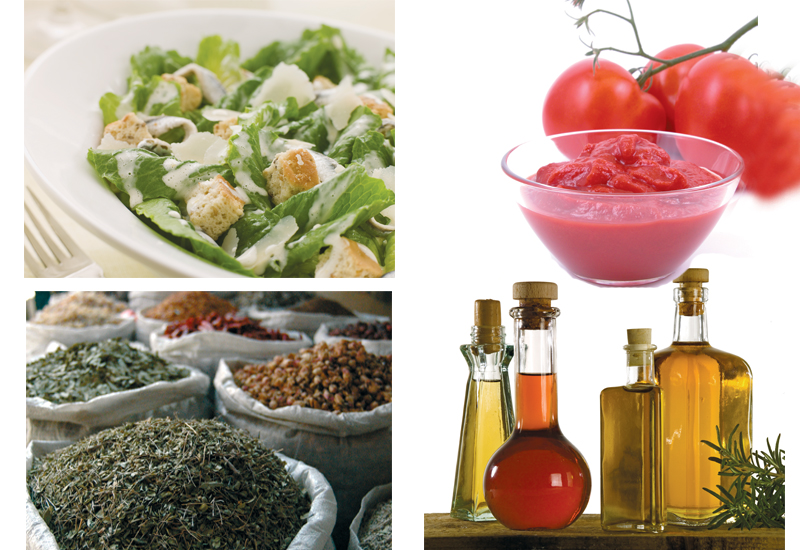Consumers might not consider them to be the most important of ingredients, but sauces and dressings actually play a major role in the construction, presentation and flavour of a dish. Chefs from across the region speak to Caterer Middle East about what makes these flavoursome additions such an essential element of a meal
From tomato to béarnaise to Caesar, sauces and dressing come in a wide variety of styles and flavours offering something different to each dish they complement. Whether as a topping, filling or dip, chefs rely on sauces and dressings to jazz up the simpler dishes on their menus.
Key ingredient
Chefs universally agree on the importance of sauces and dressings as part of a dish.
“They are crucial,” asserts Dusit Thani Dubai’s executive sous chef Gero Rio. “And the reason they are so essential is because they make a statement.
“As a chef I like to create and transform what is normal by making a difference with sauces and dressings — they can really make a dish,” he says.
Dubai Mall’s Assia in Wok Exotic Restaurant executive chef Iqbal Nurul agrees with Rio’s statement. “It is absolutely an essential component; it adds to the presentation of the food, taste, and aroma,” he comments.
“It adds appeal to the dish as a whole and excites the senses; plain dry food would not be nearly as appealing without any sauce or dressing with it.”
Dubai Creek Golf and Yacht Club executive chef Max Grenard agrees that such additions are important, but suggests that it depends on what dish the sauce is actually being served with.
“It’s purpose varies: it can be to bring additional flavour; it sometimes makes the dish more presentable; but it can also make it more moist and perhaps easier to eat,” he explains.

Advertisement
From a chef’s perspective, one of the great advantages that come with sauces and dressings is their creative value — as Coral Hotels and Resorts corporate executive chef Michel Miraton notes. “You can be quite innovative and use lots of different ingredients to make varied sauces,” he says.
“The thing to remember is that you have to have good basic stocks; this is the essential component and the main rule — good beef, chicken and fish stocks.
“Then you can add cream, or maybe saffron, caviar, blue cheese — lots of different ingredients are suitable for making good sauces, there are endless possibilities,” he comments.
Middle East origin
While dressings such as French vinaigrette and thousand island or sauces such as pepper, barbeque and mushroom remain immensely popular with guests at F&B outlets across the region, many diners do not realise that the Middle East is home to some truly great creations itself.
Popular sauces and dressings from the Mediterranean and the Far East are familiar to people all over the world, but the Middle East, with its rich array of spices and flavours can also claim to have a rich heritage of sauces and dressings.
Assia in Wok’s Nurul explains: “Kabsa is a blend of spices used to make al kabsa or al kabseh, a Saudi Arabian chicken dish.
“Toum is a traditional Lebanese dipping sauce that really packs a punch and goes perfectly with everything, from meat to bread — it contains only a handful of ingredients common to every kitchen and is quick and easy to make.”
Dubai Creek Golf and Yacht Club’s Grenard adds that the most popular sauces are tomato-based sauces, white sauces and gravy-based sauces. “These are all base sauces and by adding different ingredients to them they can become completely different concotions,” he adds.
Educated customer
The majorityof chefs, it seems, are the drivers of sauce trends themselves, rather than going with changes in customer preferences.









 Search our database of more than 2,700 industry companies
Search our database of more than 2,700 industry companies









